Kia Sportage: Crankshaft Position Sensor (CKPS)
Description and Operation
Description
Crankshaft Position Sensor (CKPS) detects the crankshaft position and is one of the most important sensors of the engine control system. If there is no CKPS signal input, the engine may stop because of CKPS signal missing. This sensor is installed on the cylinder block or the transaxle housing and generates alternating current by magnetic flux field which is made by the sensor and the target wheel when engine runs.
The target wheel consists of 58 slots and 2 missing slots on 360 degrees CA (Crank Angle).
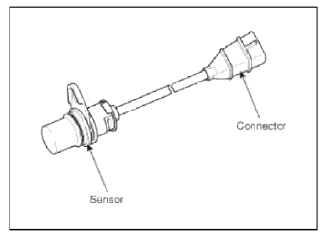
Troubleshooting
Wave Form
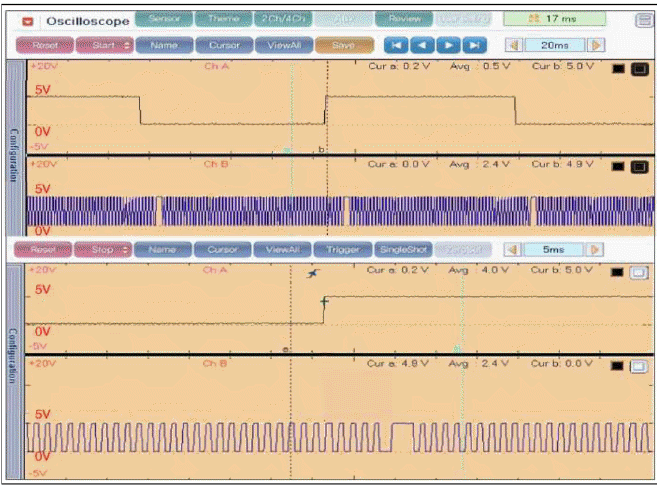
Schematic Diagrams
Circuit Diagram
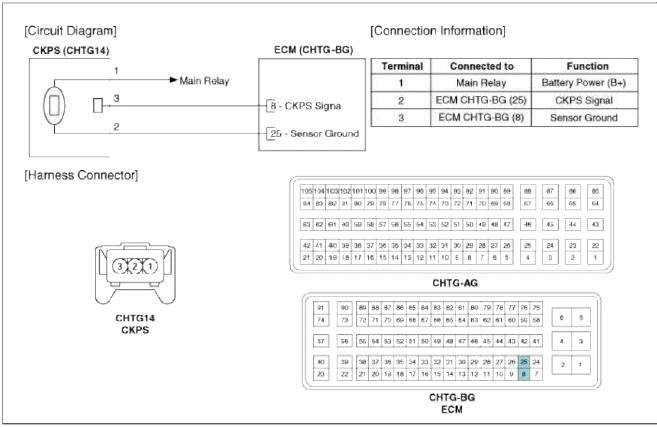
Repair procedures
Inspection
1. Check the signal waveform of the CMPS and CKPS using the GDS.
Specification: Refer to "Wave Form"
Removal
1. Turn the ignition switch OFF and disconnect the battery negative (-) cable.
2. Disconnect the crankshaft position sensor connector (A).
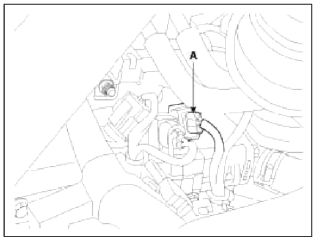
3. Remove the protector (A).

4. Remove the installation bolt (A), and then remove the crankshaft position sensor.
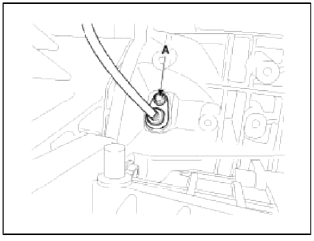
Installation
CAUTION
- Install the component with the specified torques.
- Note that internal damage may occur when the component is dropped. If the component has been dropped, inspect before installing.
CAUTION
- Apply the engine oil to the O-ring.
CAUTION
- Insert the sensor in the installation hole and be careful not to damage.
1. Installation is reverse of removal.
Crankshaft position sensor installation bolt: 9.8 ~ 11.8 N.m (1.0 ~1.2 kgf.m, 7.2 ~ 8.7 lb-ft)
Crankshaft position sensor protector installation bolt (M6): 9.8 ~ 11.8 N.m (1.0 ~ 1.2 kgf.m, 7.2 ~ 8.7 lb-ft)
Crankshaft position sensor protector installation bolt (M8): 18.6 ~ 23.5 N.m (1.9 ~ 2.4 kgf.m, 13.7 ~ 17.4 lb-ft)
Description and Operation
Description
Camshaft Position Sensor (CMPS) is a hall sensor and detects the camshaft position by using a hall element.
It is related with Crankshaft Position Sensor (CKPS) and detects the piston position of each cylinder which the CKPS can't detect.
The CMPS is installed on engine head cover and uses a target wheel installed on the camshaft. The Cam Position sensor is a hall-effect type sensor. As the target wheel passes the Hall sensor, the magnetic field changes in the sensor. The sensor then switches a signal which creates a square wave.
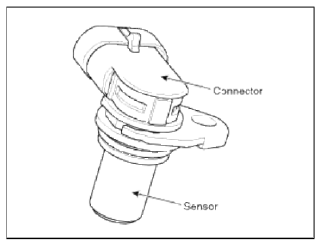
Troubleshooting
Wave Form
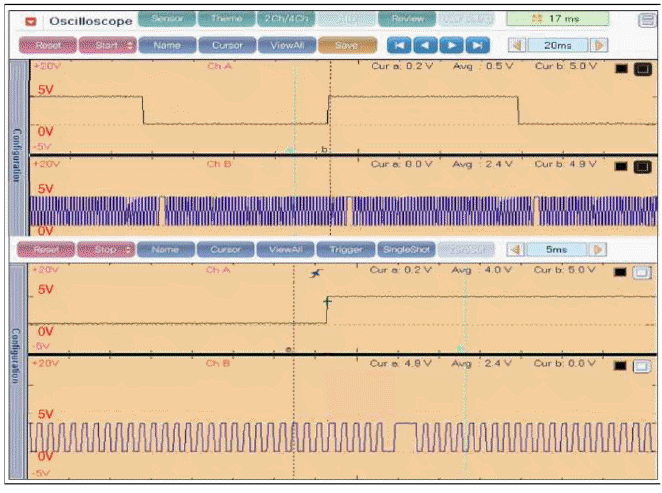
Schematic Diagrams
Circuit Diagram
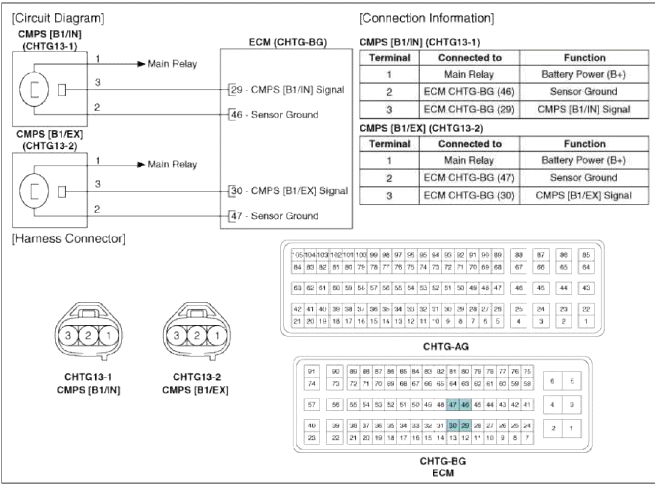
Repair procedures
Inspection
1. Check the signal waveform of the CMPS and CKPS using the GDS.
Specification: Refer to "Wave Form"
Removal
WARNING
- DON'T remove the camshaft position sensor while the engine is running or right after engine is turned off. The part and engine oil is hot and can cause bums.
[Bank 1 / Intake]
1. Turn the ignition switch OFF and disconnect the battery negative (-) cable.
2. Disconnect the camshaft position sensor connector (A).
З. Remove the installation bolt (B), and then remove the sensor.
![[Bank 1 / Exhaust]](images/books/1921/21/index%20141.png)
[Bank 1 / Exhaust]
1. Turn the ignition switch OFF and disconnect the battery negative (-) cable.
2. Remove the heater protect cover (Refer to "Intake And Exhaust System" in EM group).
3. Disconnect the camshaft position sensor connector (A).
4. Remove the hanger and the protector.
5. Remove the installation bolt, and then remove the sensor.
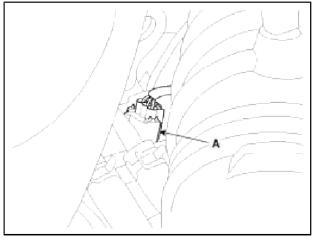
Installation
CAUTION
- Install the component with the specified torques.
- Note that internal damage may occur when the component is dropped. If the component has been dropped, inspect before installing.
CAUTION
- Apply the engine oil to the O-ring.
CAUTION
- Insert the sensor in the installation hole and be careful not to damage.
CAUTION
- Be careful not to damage the sensor housing and the connector.
- Be careful not to damage the O-ring.
1. Installation is reverse of removal.
Camshaft position sensor installation bolt: 9.8 ~ 11.8 N.m (1.0 ~ 1.2 kgf.m, 7.2 ~ 8.7 lb-ft)
READ NEXT:
 Knock Sensor (KS) | Heated Oxygen Sensor (HO2S)
Knock Sensor (KS) | Heated Oxygen Sensor (HO2S)
Description and Operation
Description
Knocking is a phenomenon characterized by undesirable vibration and noise and can cause engine damage. Knock Sensor (KS) is installed on the cylinder blo
 Rail Pressure Sensor (RPS)
Rail Pressure Sensor (RPS)
Description and Operation
Description
Rail Pressure Sensor (RPS) is installed on the delivery pipe and measures the
instantaneous fuel pressure in the delivery pipe. The sensing element
(S
SEE MORE:
 Trailing Arm | Rear Cross Member
Trailing Arm | Rear Cross Member
Repair procedures
Replacement
1. Remove the rear wheel & tire.
Tightening torque: 88.3 ~ 107.9N.m (9.0 ~ 11.0kgf.m, 65.1 ~ 79.6lb-ft)
CAUTION
Be careful not to damage to the hub bolts when removing the front wheel & tire (A).
2. Loosen the nuts & bolts and then remove the
 Components and Components Location
Components and Components Location
Components Location
Engine Control Module (ECM)
Manifold Absolute Pressure Sensor (MAPS) #1
Intake Air Temperature Sensor (IATS)
Manifold Absolute Pressure Sensor (MAPS) #2
Engine Coolant Temperature Sensor (ECTS)
Throttle Position Sensor (TPS) [integrated into ETC
Module]
Content
- Home
- Kia Sportage - Fifth generation (NQ5) - (2022-2025) - Owner's Manual
- Kia Sportage - Second generation (JEKM) (2005-2015) - Body Workshop Manual
- Kia Sportage Third generation (SL) - (2011-2016) - Service and Repair Manual
- Sitemap
- Top articles